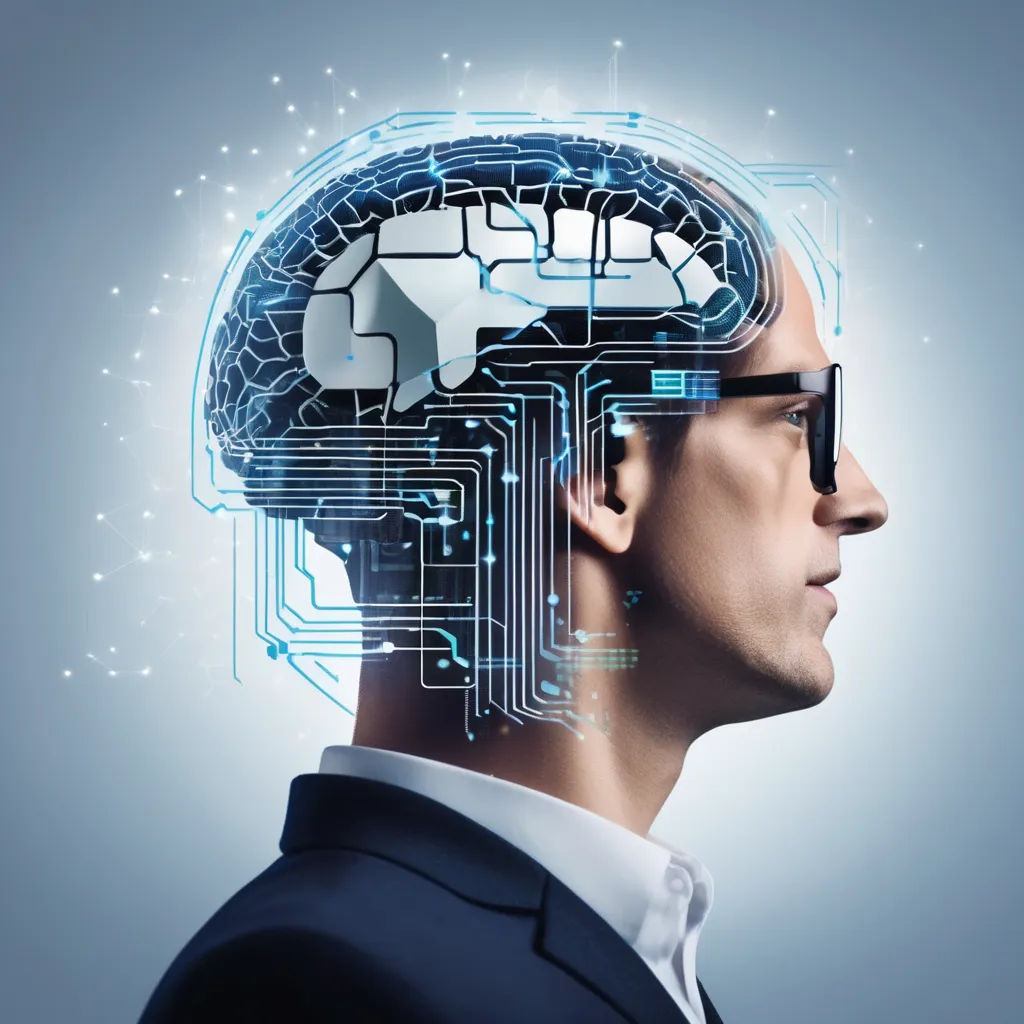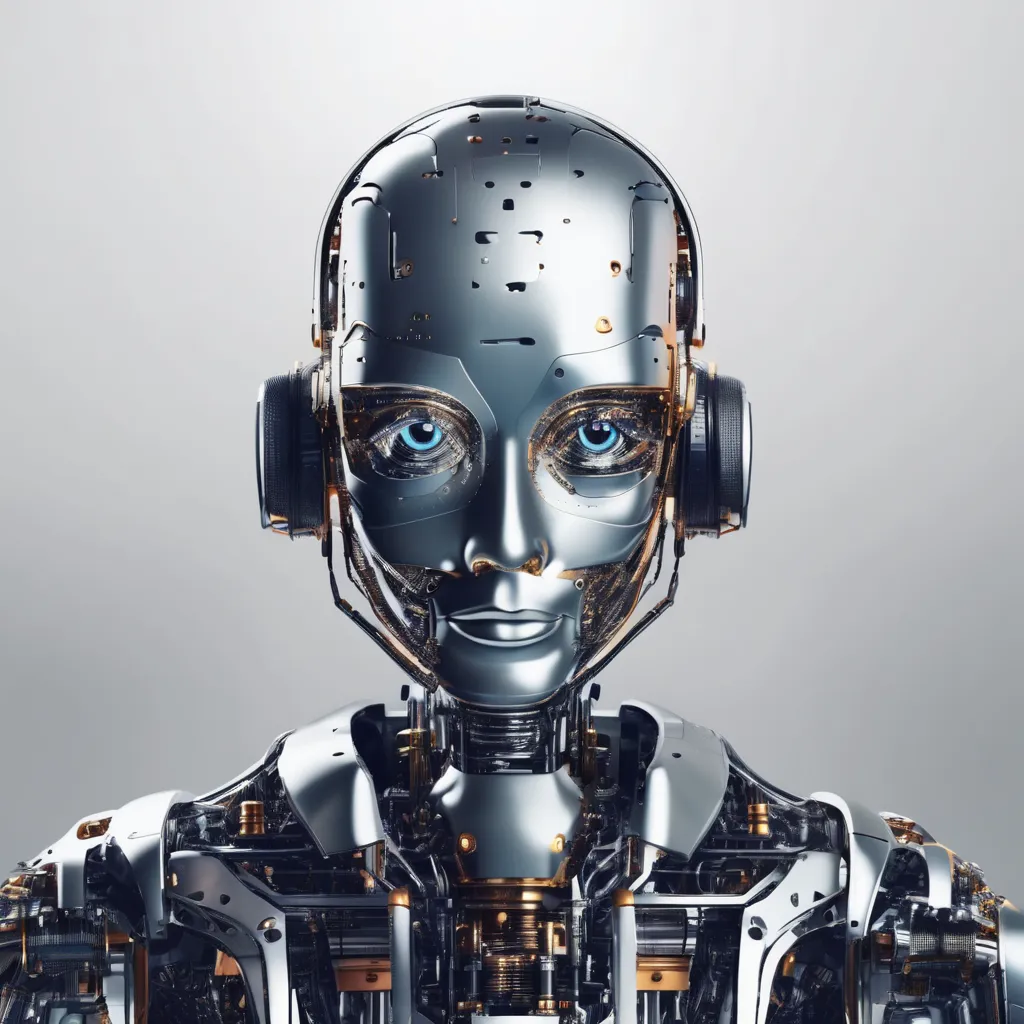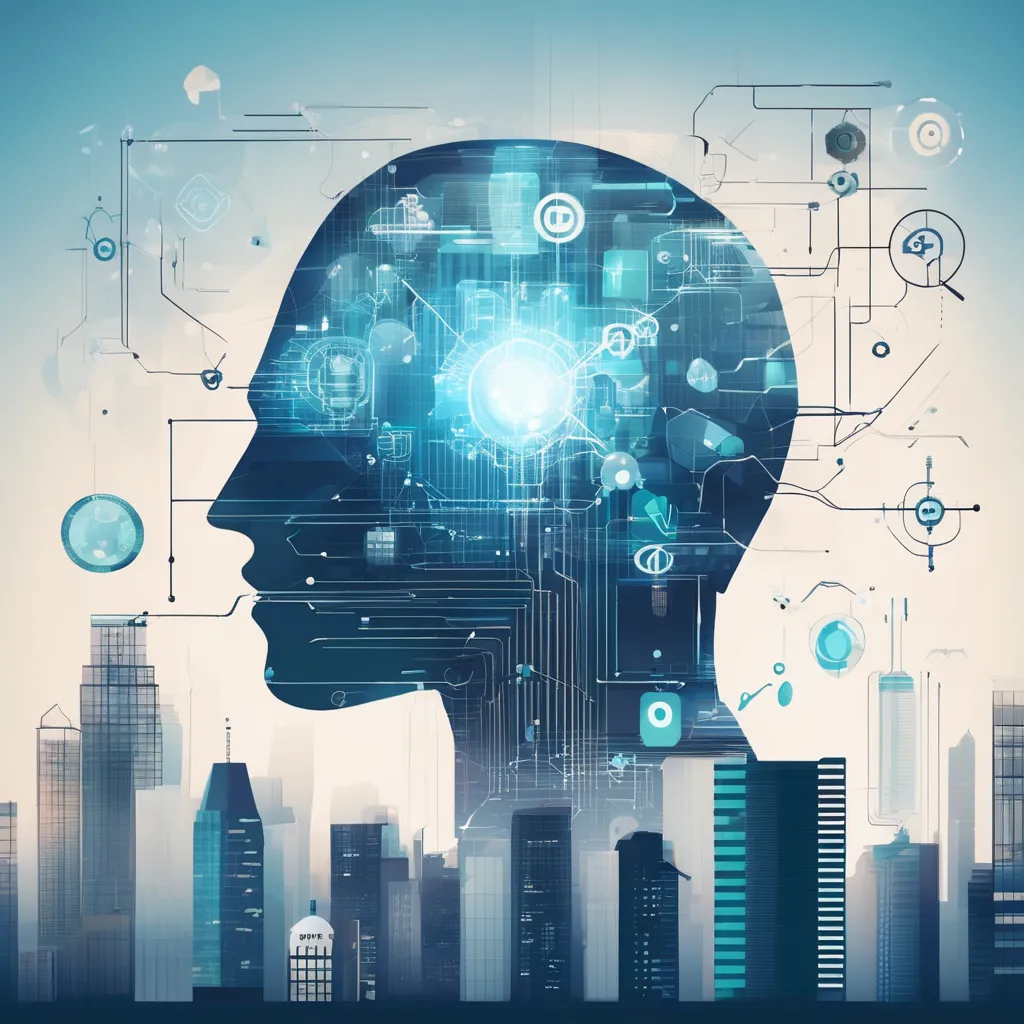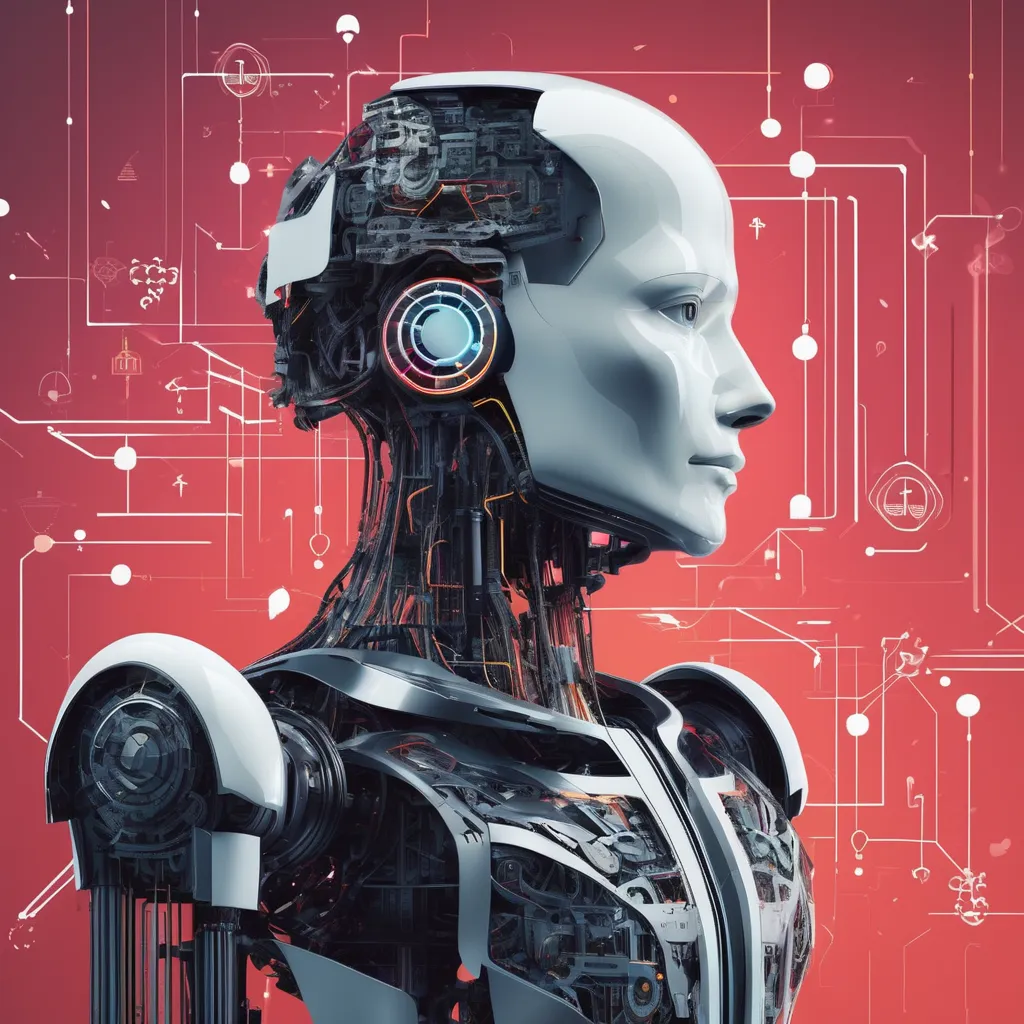Can Information Be Transferred to the Human Brain Using Chips and Artificial Intelligence?
Introduction to Brain-Computer Interfaces: The Basics
Brain-Computer Interfaces (BCIs) represent a significant leap in the confluence of human cognition and technology. These interfaces facilitate direct communication between the brain and electronic devices, enabling real-time interaction. The fundamental objective of BCIs is to bypass conventional neuromuscular pathways and establish alternative channels for sending and receiving information to and from the brain. Rooted in the fields of neuroscience, computer science, and biomedical engineering, BCIs have evolved considerably since their inception, with their applications ranging from medical treatments to enhancing human capabilities.
BCIs employ various techniques, including electroencephalography (EEG) and magnetoencephalography (MEG), to capture brain signals. These signals are processed by algorithms that transform them into commands capable of controlling external devices such as computers or prosthetics. The potential for BCIs to impact neurological disorders, such as ALS and spinal cord injuries, has been a significant driver for research and development.
The evolution of BCIs is intricately linked to advances in computational power and miniaturization of electronic components. Early versions of BCIs required extensive hardware and were limited by slow processing speeds. Modern BCIs, however, benefit from the exponential growth in computing capabilities, enabling more sophisticated and responsive interactions.
Research in BCIs is underpinned by a multidisciplinary approach, combining insights from neurophysiology, signal processing, and machine learning. This convergence of knowledge areas has propelled the development of more accurate and efficient BCIs, capable of understanding and interpreting complex brain activities.
Electrodes play a crucial role in BCIs, acting as intermediaries that capture neuronal activity. These electrodes can be non-invasive, placed on the scalp, or invasive, implanted directly into the brain tissue. Invasive BCIs generally offer higher resolution and accuracy, but come with a higher risk of complications.
Recent innovations in BCI technology include the development of flexible, biocompatible materials for electrodes, which can reduce the body’s immune response and improve signal clarity. Additionally, machine learning algorithms have improved the interpretation of brain signals, enabling more intuitive and responsive systems.
BCIs have the potential to revolutionize interactions between humans and machines, offering new avenues for communication and control. As technology continues to advance, the integration of BCIs into everyday life could become increasingly seamless.
Continued research and ethical considerations are essential to ensure BCIs are developed responsibly and equitably. As with any technology that interfaces directly with the brain, issues such as privacy, consent, and potential misuse must be carefully managed.
Ultimately, BCIs are a testament to human ingenuity and the relentless pursuit of surpassing natural limitations. Their development marks the beginning of a new era in human-machine interaction, with far-reaching implications for medicine, communication, and beyond.
This article will delve into the nuanced developments in BCIs, particularly focusing on the role of chips and artificial intelligence in facilitating the transfer of information to the human brain.
The Evolution of Chips and Artificial Intelligence in Neuroscience
The intersection of neuroscience, semiconductor technology, and artificial intelligence has led to groundbreaking advancements, transforming our understanding and capabilities concerning brain functionality. The convergence of these domains has enabled more efficient communication pathways between electronic devices and the human brain.
The miniaturization of electronic components has been a significant milestone. Semiconductor chips, initially bulky and expensive, have shrunk in size and cost due to advances in nanotechnology. These chips can now be embedded into neural prosthetics, offering real-time data processing and interaction with brain signals.
Artificial intelligence (AI) has been a pivotal element in the evolution of neuroscience. Machine learning algorithms, particularly those involving deep learning, have shown remarkable capabilities in analyzing vast amounts of neural data. These algorithms can identify patterns and predict outcomes with high accuracy, facilitating more profound insights into brain function.
The synergy between chips and AI is evident in advanced BCIs, where chips serve as hardware interfaces and AI algorithms process and interpret neural signals. This combination enables more dynamic and adaptive systems, enhancing the precision and reliability of brain-computer interactions.
Neuroscience has benefited immensely from these technological advancements. High-resolution imaging techniques, supported by powerful chips and AI, have unveiled intricate details of brain networks. Functional magnetic resonance imaging (fMRI) and other modalities can now produce more detailed and accurate neural maps, aiding in the diagnosis and treatment of neurological conditions.
The integration of chips and AI in neuroprosthetics has significantly improved their functionality. Prosthetic limbs controlled by BCIs are becoming more intuitive and responsive, allowing users to perform complex tasks with greater dexterity. This progress is fueled by the continuous improvement in the sensors’ sensitivity and the AI’s ability to interpret neural commands.
Moreover, chips and AI have enabled personalized medicine approaches in neuroscience. By analyzing individual brain patterns, AI can tailor treatments and interventions to suit specific needs, improving outcomes and reducing side effects.
The evolution of chips has also led to the development of fully implantable, wireless BCI systems. These systems offer significant advantages in terms of user convenience and long-term use, eliminating the need for external connections and reducing infection risks.
AI-driven neurotechnology is also making strides in cognitive enhancement, with the potential to augment memory, learning, and other cognitive functions. This prospect raises exciting possibilities as well as ethical considerations regarding the enhancement of human abilities beyond biological norms.
Chips and AI are critical in enabling real-time monitoring of neurological conditions. Patients with epilepsy, for instance, can benefit from AI algorithms that predict seizures by interpreting neural signals detected by implanted chips.
The landscape of neuroscience and neurotechnology is continually evolving, driven by the advancements in chips and AI. These technologies are enhancing our capacity to understand and interact with the brain, paving the way for innovative treatments and applications.
However, this evolution is not without challenges. Balancing technological possibilities with ethical standards, ensuring equitable access, and addressing potential risks remain critical concerns for the future of chips and AI in neuroscience.
As chips and AI technologies progress, their interdisciplinary nature calls for collaboration across fields to harness their full potential while safeguarding human welfare.
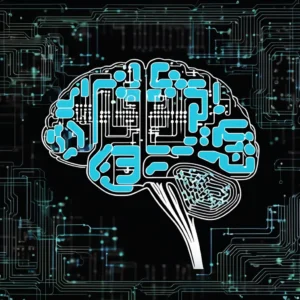
Understanding the Concept of Information Transfer to the Human Brain
The concept of transferring information directly to the human brain has long been a subject of fascination in both scientific research and popular culture. This idea hinges on the ability to encode, transmit, and decode information in a manner that the brain can comprehend and utilize.
Information transfer to the brain involves several complex processes. First, it requires the identification and understanding of the brain’s coding mechanisms. Neurons communicate through electrical and chemical signals, which need to be accurately interpreted and replicated for effective information transfer.
Encoding information in a brain-compatible format is a crucial step. For instance, artificial stimuli provided by BCIs must mimic the natural patterns of neural activity to be meaningful. This involves translating digital data into a series of neural impulses that the brain can recognize and process.
The transmission of information requires reliable interfaces that can deliver these neural impulse patterns to the correct brain regions. Invasive methods, such as implanted chips, offer direct pathways but come with higher risks. Non-invasive methods are safer but currently lack the precision and efficacy for complex information transfer.
Decoding the transmitted information is equally important. The brain must be able to interpret the artificial signals correctly, integrating them into existing neural networks. This requires a detailed understanding of brain plasticity and the ways in which neurons reorganize themselves in response to new stimuli.
Artificial intelligence plays a vital role in these processes. Machine learning algorithms can assist in interpreting neural code and developing effective encoding strategies. Furthermore, AI can adapt the transmission patterns based on feedback, optimizing the interface for better integration with the brain’s natural functions.
Experimental approaches have explored various means of information transfer. Visual prosthetics, for instance, use implanted chips to send visual information directly to the visual cortex, enabling rudimentary sight in blind individuals. Similar strategies are being investigated for auditory and motor functions.
Memory enhancement presents another intriguing application. Experiments with rodents have demonstrated the possibility of implanting chips that can deliver electrical patterns to the hippocampus, a region critical for memory formation. These patterns can enhance or inhibit memory recall, showcasing the potential for artificial memory enhancement.
Despite promising results, several challenges remain. The complexity of the human brain, with its trillions of synaptic connections, makes scaling these experimental approaches difficult. Ensuring the biocompatibility and long-term stability of implanted devices is another significant hurdle.
Ethical considerations also play a significant role in the development of brain information transfer technologies. The potential for misuse, the implications of cognitive enhancement, and issues of consent and autonomy necessitate careful regulation and ethical oversight.
Continuous research and interdisciplinary collaboration are essential to overcoming these challenges. Neuroscientists, engineers, ethicists, and policymakers must work together to ensure that these technologies are developed responsibly and equitably.
Understanding the concept of information transfer to the brain is still in its nascent stages, but the potential it holds is vast. Future advancements will likely bring us closer to realizing this capability, unlocking new possibilities in medicine, communication, and cognitive enhancement.
As we explore these frontiers, maintaining a focus on ethical implications and human well-being will be crucial to harnessing the benefits of brain information transfer while mitigating potential risks.
The Role of AI in Enhancing Brain-Chip Interactions
Artificial Intelligence (AI) is at the forefront of revolutionizing brain-chip interactions, providing the computational power and algorithms necessary to interpret and manage complex neural data. The integration of AI into BCIs enhances their functionality, efficiency, and adaptability, bringing us closer to seamless information transfer between humans and machines.
AI’s role begins with signal processing. Brain signals, often noisy and complex, require sophisticated techniques to extract meaningful information. Machine learning algorithms, particularly neural networks, excel in pattern recognition and noise reduction, enabling more accurate interpretation of brain activity.
Machine learning models can be trained using large datasets of neural signals, allowing them to identify specific patterns associated with different cognitive states or intentions. This capability is crucial for developing responsive BCIs that can translate neural signals into actionable commands.
AI also facilitates real-time adaptation in brain-chip interactions. Reinforcement learning algorithms, for instance, can continuously optimize the interface based on feedback, improving its performance over time. This adaptability is essential for accommodating the dynamic nature of brain activity and individual differences among users.
Neural decoding, the process of converting brain signals into digital commands, heavily relies on AI. Sophisticated algorithms can translate complex spatiotemporal patterns of neural activity into discrete signals that control external devices or provide feedback to the user.
In addition, AI enhances the precision of stimulation in invasive BCIs. Algorithms can determine the optimal parameters for electrical stimulation, such as amplitude, frequency, and duration, ensuring that the artificial stimuli closely mimic natural neural activity. This precision reduces the risk of adverse effects and enhances the efficacy of information transfer.
AI also plays a critical role in non-invasive BCIs, where the challenge lies in accurately interpreting brain signals through the skull. Machine learning techniques improve the accuracy of signal classification and help develop more effective encoding strategies, making non-invasive methods more viable for complex applications.
Another important aspect is the development of AI-driven neural models. These models simulate the brain’s response to different stimuli, aiding in the design and testing of new BCI systems. They allow researchers to experiment with various encoding and stimulation strategies in silico before applying them in vivo.
AI’s ability to process and analyze large datasets is invaluable for understanding brain activity and identifying biomarkers. This capability is particularly useful in medical applications, where detecting early signs of neurological disorders or monitoring disease progression can lead to better interventions and outcomes.
Predictive analytics, powered by AI, can forecast neural responses based on historical data. In epilepsy treatment, for instance, AI algorithms can predict seizures by analyzing brain activity patterns, allowing timely interventions to prevent them.
Moreover, AI enables personalized BCIs, tailoring the interfaces to individual users’ neural patterns. This personalization enhances user experience and effectiveness, making BCIs more accessible and practical for a broader range of applications.
The synergy between AI and brain implants also extends to cognitive enhancement applications. AI algorithms can identify specific neural patterns associated with memory or learning processes, enabling targeted stimulation that enhances these functions.
While the potential of AI in brain-chip interactions is immense, it also brings forth ethical and safety concerns. Ensuring that AI algorithms are transparent, fair, and secure is paramount to prevent misuse and protect users’ privacy and autonomy.
In conclusion, AI is a critical enabler of advanced brain-chip interactions, offering tools and techniques to decode, interpret, and manage complex neural data. As AI technology continues to evolve, its integration with BCIs promises to unlock new possibilities in medical treatment, cognitive enhancement, and human-computer interaction, paving the way for a future where direct brain information transfer becomes a reality.
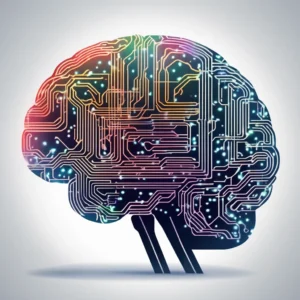
Recent Advancements in Neurotechnology: Chips and AI
Neurotechnology, at the intersection of neuroscience and technology, has witnessed remarkable advances, particularly in the integration of chips and artificial intelligence (AI). These innovations have profound implications for understanding, diagnosing, and treating neurological conditions, as well as for augmenting human capabilities.
One of the most significant advancements is the development of high-resolution neural interfaces. These interfaces, often involving sophisticated semiconductor chips, can record and stimulate neural activity with unprecedented accuracy. Flexible, biocompatible materials used in these chips reduce immune responses and ensure better integration with brain tissue.
AI has revolutionized neural signal processing, with machine learning algorithms enhancing the precision and reliability of data interpretation. For instance, deep learning models can analyze complex brain signals to detect specific patterns related to various cognitive and motor functions, improving the overall efficacy of BCIs.
Wireless brain-chip systems represent another major leap forward. These systems eliminate the need for cumbersome external connections, reducing the risk of infection and increasing user mobility and comfort. Advances in wireless power transfer and data transmission have made these systems a practical reality.
Neuroprosthetics, equipped with intelligent chips and AI, are becoming more sophisticated and responsive. Modern prosthetic limbs, controlled by BCIs, offer a level of dexterity and control previously unattainable. These devices leverage AI to interpret neural signals, enabling users to perform complex tasks with greater ease.
The field of memory enhancement has seen notable progress, with experiments demonstrating the feasibility of chip-induced memory modulation. Researchers have developed implantable devices that can deliver electrical patterns to the hippocampus, enhancing or inhibiting memory recall, thereby opening new avenues for treating memory-related disorders.
AI-driven neurodiagnostics have significantly improved the detection and monitoring of neurological conditions. Algorithms can analyze brain imaging data to identify early signs of diseases like Alzheimer’s or Parkinson’s, enabling timely intervention. This capability is crucial for enhancing patient outcomes and reducing the burden of chronic neurological conditions.
Advances in neurostimulation techniques, supported by AI and chips, have led to more effective treatments for conditions like depression and epilepsy. Deep brain stimulation (DBS) systems, for example, can now be fine-tuned using AI algorithms to deliver precise electrical impulses, optimizing therapeutic outcomes while minimizing side effects.
The miniaturization of electronic components has made it possible to develop fully implantable, minimally invasive BCIs. These devices can be placed within specific brain regions to monitor and modulate neural activity continuously, offering new possibilities for long-term treatment of neurological disorders.
AI-enabled brain-machine interfaces (BMIs) are enhancing the communication capabilities of individuals with severe motor impairments. By accurately interpreting neural signals associated with speech or movement intentions, these systems enable users to control external devices, communicate, and interact with their environment more effectively.
Neurofeedback systems, powered by AI, are becoming more intuitive and effective. These systems provide real-time feedback on brain activity, helping users to regulate their neural patterns, which can be beneficial for treating conditions like ADHD, anxiety, and chronic pain.
One of the promising areas of research is the use of AI and chips in brain-computer music interfaces. These systems allow users to compose and play music using their brain signals, demonstrating the potential for creative and therapeutic applications of BCIs.
The development of AI-enhanced neurorehabilitation tools has transformed post-stroke recovery. Robotic exoskeletons, controlled by AI-interpreted brain signals, assist patients in regaining motor functions, offering tailored rehabilitation programs based on individual neural responses.
Advanced neuroimaging techniques, coupled with AI, are providing deeper insights into brain function and structure. Functional MRI and positron emission tomography (PET) scans, analyzed by AI algorithms, can reveal intricate details of brain activity, contributing to a better understanding of neural mechanisms.
AI’s role in drug discovery and development for neurological conditions is also notable. Machine learning models can predict the efficacy and safety of new compounds, accelerating the development of treatments for diseases that currently lack effective therapies.
Moreover, the integration of AI and neurotechnology in education is creating new learning paradigms. Adaptive learning systems can tailor educational content based on learners’ cognitive states, optimizing the learning experience and potentially enhancing academic performance.
The exploration of AI and chips in neurotechnology is also pushing the boundaries of human cognition. Researchers are investigating the possibility of cognitive enhancement through direct brain interfaces, raising exciting possibilities and significant ethical questions.
Despite these advancements, numerous challenges remain. Ensuring the long-term biocompatibility of implants, addressing the ethical implications of cognitive enhancement, and navigating the complex regulatory landscape are critical issues that must be addressed as the field progresses.
In conclusion, recent advancements in neurotechnology, driven by the integration of chips and artificial intelligence, are transforming our approach to neuroscience, medical treatment, and human enhancement. As these technologies continue to evolve, they hold the promise of unprecedented possibilities for understanding and augmenting the human brain, paving the way for a future where direct brain information transfer becomes increasingly feasible.
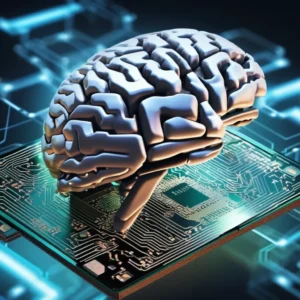
Potential Benefits of Brain-Integrated Chips
The incorporation of chips into the human brain, facilitated by advancements in neurotechnology and artificial intelligence, holds the promise of numerous benefits. These brain-integrated chips can revolutionize medical treatments, enhance cognitive functions, and improve quality of life for individuals with neurological conditions.
One of the most significant benefits is the potential for restoring lost functions in individuals with severe disabilities. Brain-integrated chips can facilitate communication for those with ALS or locked-in syndrome by interpreting neural signals and converting them into speech or text, enabling more effective interaction with the outside world.
For individuals with motor impairments, such as those caused by spinal cord injuries or strokes, brain-integrated chips can control prosthetic limbs or exoskeletons. These devices, commanded by neural signals, can restore mobility and independence, offering a significant improvement in quality of life.
In the realm of sensory restoration, chips implanted in the visual or auditory systems can provide artificial sight or hearing for individuals with sensory deficits. Visual prosthetics, for instance, use chips to send visual information directly to the visual cortex, offering a degree of vision to those who are blind.
Cognitive enhancement through brain-integrated chips is an area of great interest. These chips can potentially augment memory, learning, and problem-solving abilities by delivering targeted stimulation to specific brain regions. This capability could be transformative for education and professional development.
The treatment of neurological disorders stands to benefit significantly from brain-integrated chips. Conditions such as epilepsy, Parkinson’s disease, and depression can be managed more effectively with neural implants that monitor and modulate abnormal brain activity, providing timely interventions to mitigate symptoms.
Pain management is another area where brain-integrated chips offer potential benefits. Chronic pain, often resistant to conventional treatments, can be alleviated through targeted neural stimulation. Chips can deliver electrical impulses to pain-related brain regions, reducing the perception of pain without the side effects of pharmaceutical interventions.
Neural chips can enhance rehabilitation processes for patients recovering from brain injuries or strokes. By providing precision stimulation and feedback, these devices can aid in retraining neural pathways, accelerating recovery and improving functional outcomes.
In research, brain-integrated chips provide unparalleled access to real-time brain activity data. This capability can lead to new insights into brain function, aiding in the development of novel treatments and interventions for a wide range of neurological conditions.
AI-driven personalized medicine can be significantly enhanced by brain-integrated chips. By continuously monitoring neural activity, these chips can deliver personalized therapeutic interventions tailored to individual needs, improving treatment efficacy and reducing side effects.
The potential for direct brain-to-brain communication,
